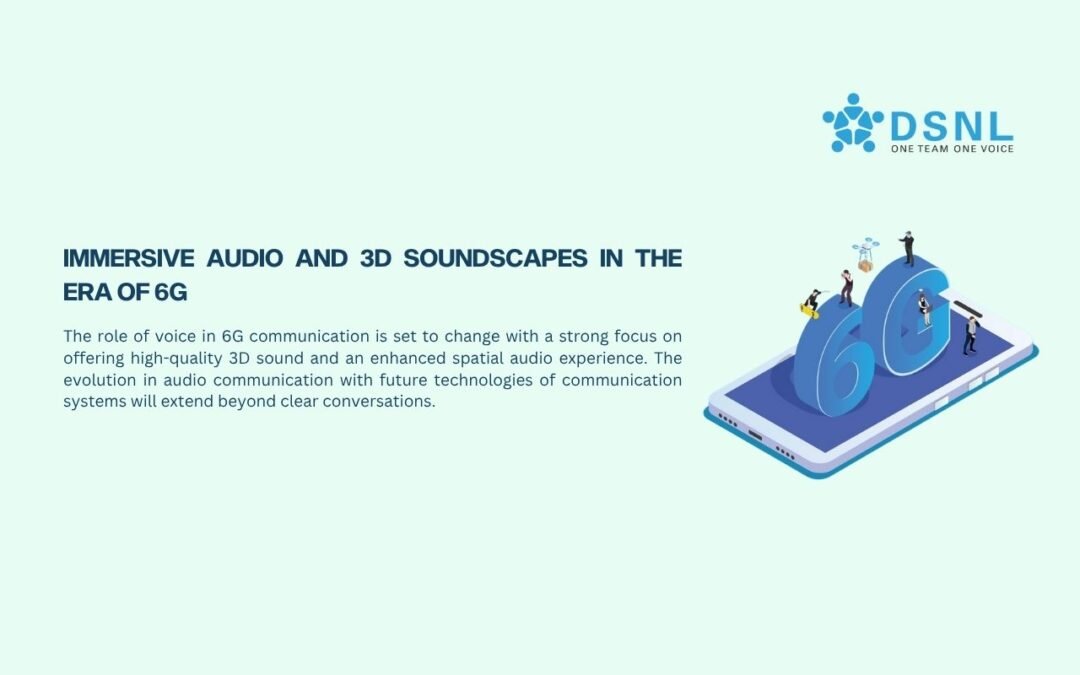The role of voice in 6G communication is set to change with a strong focus on offering high-quality 3D sound and an enhanced spatial audio experience. The evolution in audio communication with future technologies of communication systems will extend beyond clear conversations.
It will embrace immersive experiences that combine the clarity of 6G with 3D soundscapes and spatial audio. Business communication can see many benefits with 6G as applications will become more powerful and complex.
The Jump From Clear To Immersive
Voice networks have historically been about removing static and background noise, achieving crystal clear clarity, and reducing latency. These will always be a critical baseline, but the bar for users is now moving quickly.
With more organizations embracing virtual meetings, remote collaboration, and digital events, there is now a requirement beyond simply “hearing” to “experiencing” sound. Immersive audio enables the experience of feeling like you are in the same room with other participants, for more natural and engaging digital experiences.
6G 101: Immersive Audio and 3D Soundscapes
First, at its core, immersive audio is made possible by the ultra-low latency and massive bandwidth of 6G networks. Built for future tech that demands higher bandwidth and ultra-low latency—not just to process data at incredible speeds, but also to render detailed and lifelike sensory experiences.
Paired with 6G’s near-instantaneous data transfer speeds, voice systems using immersive audio with 3D soundscapes will experience zero perceptible lag in terms of directionality, depth, and the precise placement of sound within an environment.
Greening our Grail: The Sustainable, Scalable Case for Immersive Networks
Of course, the more lifelike that digital experiences are, the more resource-intensive they become.
At a time when going green is more important than ever, green data centers, 6G energy efficiency, and network functions virtualization make immersive voice a critical component of any eco-friendly communications solution.
Clarity to Immersion
Traditionally, the goal of voice networks has been the minimization of static, enhancement of clarity, and reduction of latency. These are still vital to the user experience, of course, but today, as a growing number of businesses move to virtual meetings, remote collaboration, and digital-first events, the emphasis has evolved from merely “hearing” to “experiencing” sound.
Audio for Business: 3D Soundscapes for Collaboration
The ability to truly collaborate in an immersive environment is one of the most immediate applications of 3D soundscapes for the enterprise. Virtual meetings that take advantage of sound localization technologies will provide users with the ability to not only recognize who is speaking based on their voice but also to “see” where they are sitting within the environment.
Training, conferences, and customer interactions can be made more interactive and intuitive with immersive audio for the same reason.
Conclusion
Immersive audio and 3D soundscapes powered by 6G technologies are redefining the future of communication, particularly in the area of voice and collaboration.
With new use cases for immersive voice in the enterprise, not to mention the evolution of customer expectations as 6G becomes the next mainstream, these technologies present an opportunity to deliver a higher standard of communication. Partner with DSNL, and let us help you build immersive voice experiences for your business.

